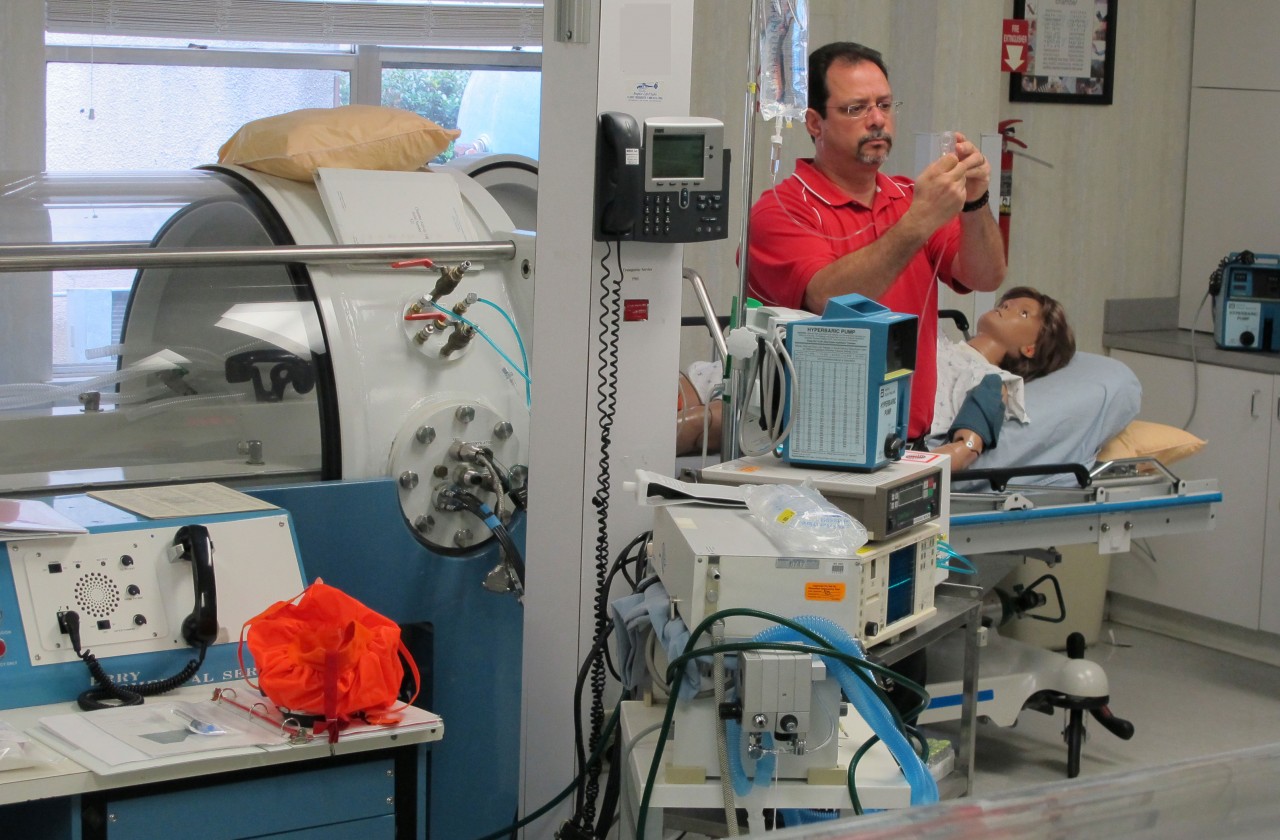Cardiac arrest is a rarity in the chamber, as most arrhythmias seem to improve under hyperbaric conditions. Anecdotally, it can be noted that one patient with a myocardial infarction, who was being treated with hyperbaric oxygen as part of a research study, suffered 30 cardiac arrests during the 48 hours he was being treated with the chamber. The schedule being followed called for two hours at pressure in the chamber followed by one hour on the surface. This cycle was repeated for two days. It can be seen that the patient spent only 1/3 of his time breathing air on the surface. During the study, the patient suffered 28 cardiac arrests while breathing air on the surface, but only two arrests while at pressure in the chamber. The patient eventually recovered and returned to work. (Thurston, J. Westminster Hosp, London, Personal Communication, 1973.)
Copyright
© Wound Care Education Partners. All Rights Reserved.


